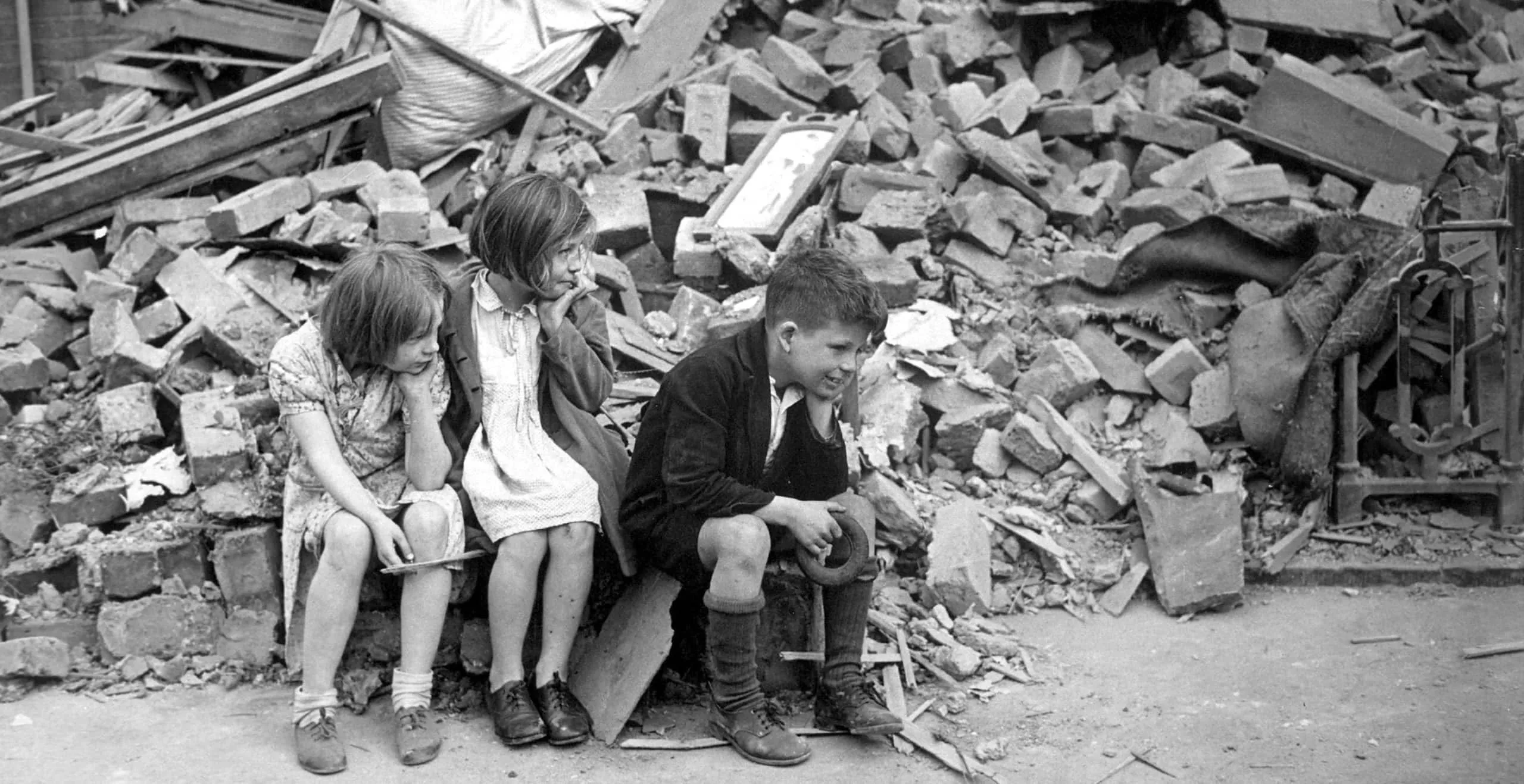Time does not heal all wounds; it turns them into relics. The London Blitz was such a wound, a tear in the fabric of a city and a psyche, leaving behind a silence that subsequent generations have tried to fill. Britain and the Blitz attempts not to fill this silence but to listen to its echoes.
The film eschews the detached voice of the historian, instead summoning spirits from the archive. Through the strange alchemy of digital restoration, black-and-white specters are given the blush of life, their color-saturated world made unnervingly present.
The film’s method is a séance, using restored archival reels and the disembodied voices of the dead and the dying to build a mosaic of existence at ground zero. It seeks a truth not of dates and strategies, but of shaking hands and held breath in the long, dark nights of the soul.
The Specter of Color
To watch this film is to witness a resurrection that feels both miraculous and profane. The past, typically shrouded in the respectful monochrome of memory, is rendered in hyper-realistic color. The dome of St. Paul’s, an island of faith in a sea of fire, glows with an infernal beauty.
The faces of young women in an RAF plotting room, pushing markers across a map that is a god’s-eye view of their own potential obliteration, are sharpened with a terrifying clarity. Color does not simply make these images more real; it makes them uncanny. The past becomes a vivid, saturated dream from which we might not wake.
This visual séance is amplified by a meticulously crafted soundscape. The wail of sirens, the drone of unseen bombers, the sharp crack of anti-aircraft fire—these sounds are layered over silent footage, creating an auditory phantom. We hear the voices of individuals narrating their own lives, their words floating over images of themselves as younger beings, ghosts speaking to ghosts in a world that no longer exists.
Fragments of Being
The film’s narrative is not a line but a constellation of shattered lives. It finds its meaning in the fragments of human experience, each one a testament to existence under duress. We meet Edith Heap, an RAF plotter whose love for a pilot burns brightly and briefly, a small, desperate warmth against the cold indifference of the war machine that consumes him.
Her memory is a study in the persistence of affection in a nihilistic landscape. We meet Eric Brady, a child evacuee, whose story is one of primal fear—the trauma of a bombed-out school, the dread of being the last boy chosen from a line. His experience speaks to the profound dislocation of a world where the ground has been pulled from beneath your feet.
Then there is the remarkable diary of Joan Wyndham, a young art student who, facing nightly annihilation, decides that the only proper response to death is an ecstatic embrace of life. Her contemplation of being seduced is not frivolous; it is a profound philosophical act, a defiant assertion of the flesh against the encroaching void.
The Unseen Architect
By removing the grand figures from the center, the film offers a perspective that is atomized, intensely personal, yet adrift. The focus on the ordinary person’s experience is not a simple act of democratization; it creates a world of effects without a clear, guiding cause.
The narrative hops between unrelated souls, mirroring the chaos of the time but risking a certain incoherence. One is left with a powerful feeling of what it was like, but a weaker sense of what was happening.
We see the WAAF plotters at work, but the specifics of their vital task remain opaque, reducing their actions to visual texture rather than understood labor. This ambiguity extends to the voices themselves. Are they the authentic audio of a survivor, or the careful reading of an actor?
This uncertainty gnaws at the film’s foundation, leaving one to question if we are witnessing a pure testimony or a performance of one, a truth or a beautiful reenactment of it.
The Polished Skull
What, then, is this artifact? Is it history, or is it a memorial? The film presents a version of the past that has been curated, buffed to a high gloss, its more complex and troubling contours smoothed away. We are shown the skull of a nation’s defiance, but it has been bleached of context.
There is no mention of the vast empire upon which this island nation rested, no whisper of the millions in Bengal who starved while resources were marshaled for the European theater. By excising these inconvenient truths, the film constructs not a record, but a myth.
It is a powerful and emotionally resonant myth of stoicism and endurance, a flattering self-portrait that is easier to embrace than a complete history. The documentary succeeds in capturing the feeling of a moment with astonishing force, but in doing so, it offers a form of remembrance that is selective. It chooses to honor the beautiful, resilient bone, forgetting the messy, complicated life that once surrounded it.
Britain and the Blitz is a 77‑minute historical documentary directed by Ella Wright, released globally on Netflix on May 5, 2025.
Full Credits
Director: Ella Wright
Cast: Frieda Anderson, Ballard Berkely, Tom Betts, Eric Brady, Winston Churchill, Edith Heap, Adolf Hitler, Richard Holsgrove, King George VI, Bernard Kops, Gerhard Krems, Phil Piratin, Marie Price, Charlotte Salkind
Editors: Samuel R. Santana
Composer: Sam Thompson
The Review
Britain and the Blitz
Britain and the Blitz is less a documentary and more a powerful, haunting séance. Through breathtakingly restored footage and intimate testimonies, it resurrects the visceral experience of a city under siege with profound emotional force. It is an essential watch for its technical artistry and its moving collection of human fragments. However, its power comes at the cost of historical completeness. By presenting a polished, heroic myth scrubbed clean of its uncomfortable imperial context, the film offers a beautiful but curated memory, an experience of history rather than a critical examination of it.
PROS
- Visually stunning colorization and restoration of archival footage.
- Deeply moving and intimate first-person accounts of survival and loss.
- Creates a powerful, immersive atmosphere that makes history feel immediate.
CONS
- Presents a simplified and incomplete historical narrative.
- Ignores the broader context of the British Empire and controversial aspects of the war effort.
- The fragmented structure can lack analytical depth and coherence.


















































